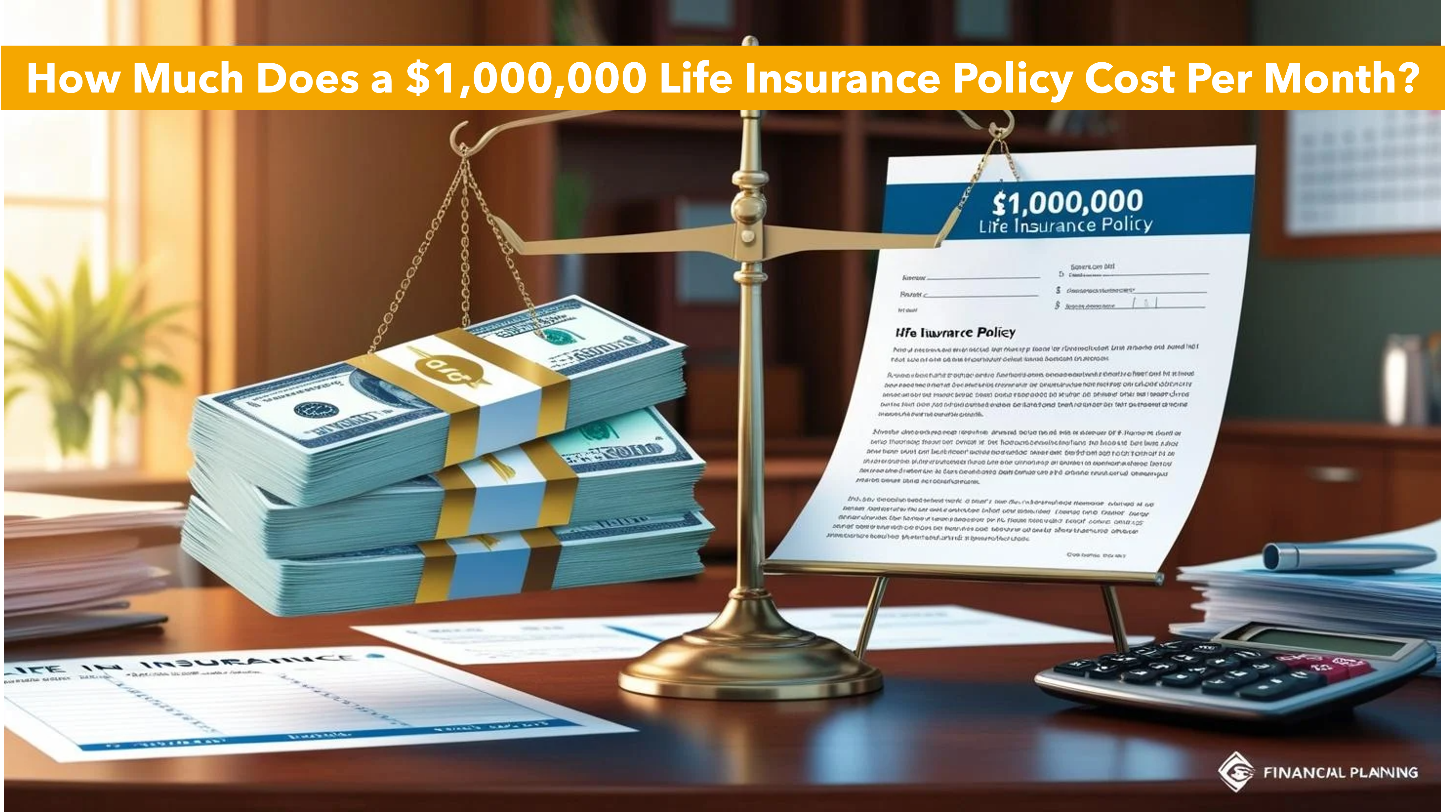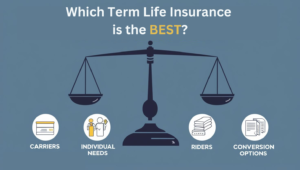by Sabine Jensen
TL;DR: Cost Factors for a $1,000,000 Life Insurance Policy
- Age & Gender: Younger individuals and women generally pay lower premiums. Consider backdating to lock in a younger age for potential savings.
- Health & Smoking Status: Good health and non-smoking status can significantly reduce premiums. Some insurers offer no-exam policies for healthy individuals.
- Policy Type: Term life insurance is more affordable than permanent life insurance, offering coverage for a specific period without cash value.
- Term Length: Longer terms in term life insurance result in higher premiums due to extended coverage duration.
- Comparison Shopping: Costs vary widely; compare quotes from different insurers to find the best fit for your financial needs and goals.
When considering life insurance, one of the most common questions is, “How much will it cost?” Specifically, for a $1,000,000 life insurance policy, the monthly premium can vary widely. Here are some of the factors that influence the cost and provide a general idea of what you might expect to pay.
The monthly cost of a $1 million Term life insurance policy can vary significantly based on several factors, including age, gender, health, and the type of policy (term vs. permanent life insurance).
Factors Affecting Cost
Age: Age is one of the most significant factors affecting life insurance premiums. Generally, the younger you are, the lower your premiums will be. This is because younger individuals are typically at a lower risk of health issues, making them less risky to insure. Interestingly, with most insurance carriers, you are considered to turn one year older on your half birthday. This means that if your birthday is in December, you would be considered a year older starting in June. To potentially lower your premiums, there is an option to backdate the policy to a date before your half birthday. Backdating means setting the effective date of the policy to an earlier time, allowing you to lock in a lower age and, consequently, a lower premium. However, it’s important to do the calculations to ensure that backdating is financially beneficial. If you choose to backdate, you will need to pay the premiums from the backdated policy date to the present. Despite this initial cost, backdating usually breaks even in a few years and can save money in the long run, as the premium for being a year younger is typically less.
Health: Your health status plays a crucial role in determining your life insurance cost. Individuals in good health typically pay lower premiums. Insurers may require a medical exam to assess your health, looking at factors such as blood pressure, cholesterol levels, and any pre-existing conditions. Additionally, family history is an important consideration. If your parents have or had cancer or heart issues before the age of 60, it could impact your premiums, as insurers may view you as having a higher risk of developing similar conditions.
For those in excellent health, some carriers, like Securian and Prudential, offer policies without requiring a medical exam. This can expedite the approval process and make obtaining life insurance more convenient. For example, my most recent client, a 44-year-old female who decided she needed an additional $500,000 of 20-year term life insurance on a Friday afternoon. It took her 30min to complete the online application. By Monday at noon, she was approved for the best underwriting class, thanks to her excellent health and the no-exam policy option. With backdating, she pays $38 monthly, benefiting from a lower premium due to her younger age at the time of backdating. This scenario highlights how being in good health can simplify the process and potentially reduce costs.
Smoking Status: Smoking is a significant risk factor for many health issues, including heart disease, cancer, and respiratory illnesses. As a result, smokers generally pay more for life insurance than non-smokers. Insurance companies categorize applicants into different risk classes, and smokers are typically placed in higher-risk categories, leading to higher premiums. The difference in cost can be substantial, with smokers sometimes paying double or even triple the premiums of non-smokers for the same coverage.
If you’re a smoker considering life insurance, it’s important to understand how your smoking status affects your premiums. However, there’s good news for those who quit smoking. Many insurers offer the opportunity to re-evaluate your premiums after you’ve been smoke-free for a certain period, often one to two years. By demonstrating improved health and a commitment to a smoke-free lifestyle, you may qualify for lower rates similar to those of non-smokers.
Gender: Statistically, women tend to live longer than men, which often results in lower premiums for women. Insurance companies take this into account when calculating premiums.
Policy Type: The type of life insurance policy you choose significantly impacts the cost and coverage you receive. The two primary types of life insurance are term life insurance and permanent life insurance, each with distinct features and pricing structures.
- Term Life Insurance: This type of policy provides coverage for a specific period, typically 10, 20, or 30 years. It is generally more affordable than permanent insurance because it only offers a death benefit without any cash value component. Term life insurance is ideal for individuals who need coverage for a particular time frame, such as until their children are grown or their mortgage is paid off. The premiums are typically fixed for the duration of the term, making it easier to budget for.
- Permanent Life Insurance: Unlike term life, permanent life insurance provides lifetime coverage and includes a cash value component that grows over time. This cash value can be borrowed against (collateral) or withdrawn, offering a savings element in addition to the death benefit. However, permanent life insurance is significantly more expensive than term life due to these additional features. It may be suitable for those looking for permanent coverage and a way to build tax-deferred savings.
When choosing between term and permanent life insurance, it’s essential to consider your financial goals, coverage needs, and budget. Term life insurance is often recommended for those seeking affordable, temporary coverage, while permanent life insurance may appeal to individuals interested in lifelong protection and investment opportunities. Understanding the differences between these policy types can help you make an informed decision that aligns with your long-term financial strategy.
If your primary goal is death benefit protection, opting for a term life insurance policy is often a smart initial choice. By selecting a 30-year term life insurance policy, you can benefit from significantly lower premiums compared to permanent life insurance, allowing you to allocate your financial resources more efficiently during this period. As the term nears its end, you have the option to convert the policy into a permanent one, without undergoing additional medical underwriting. This strategy enables you to enjoy the cost savings of term insurance for 30 years before transitioning to a permanent policy with higher premiums. However, it’s crucial to choose a carrier that offers flexible conversion options, allowing you to convert to any product in their portfolio rather than being limited to a specific conversion product. Some carriers restrict conversions to particular products that can be prohibitively expensive, potentially negating the savings you achieved with term insurance. By selecting a carrier with a broad range of conversion options, you can ensure that your long-term financial strategy remains cost-effective and aligned with your goals.
Term Length: For term life insurance, the length of the term can impact the premium. Longer terms typically have higher premiums because the insurer is covering you for a more extended period.
Cost Examples:
- $1,000,000 – Term 20 – Healthy Female – Age 31 – Premium: $24/monthly
- $1,000,000 – Term 20 – Healthy Male – Age 31 – Premium: $30/monthly
- $1,000,000 – Term 20 – Healthy Female – Age 44 – Premium: $60/monthly
- $1,000,000 – Term 20 – Healthy Male – Age 44 – Premium: $75/Monthly
Conclusion
In summary, the cost of a $1,000,000 life insurance policy can vary widely based on several factors. It’s essential to shop around and compare quotes from different insurers to find the best policy for your needs and budget.
When considering life insurance, it’s crucial to assess your financial situation and coverage needs. Consulting with a financial advisor or insurance professional can help you make an informed decision that provides peace of mind for you and your loved ones.




No responses yet